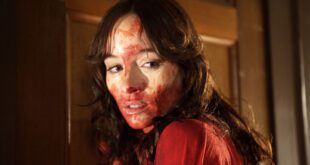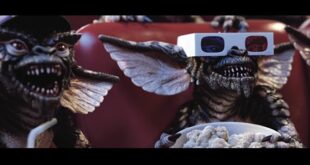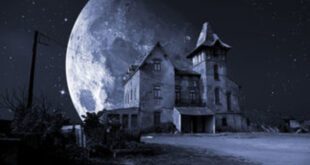Over the years, CGI has received a lot of negativity from the horror community. The replacement of practical gore and special effects has been part of the film industry for over 30 years now. Things we take for granted like the MCU would be nothing more than a dream without digital effects and the ability to create fully CGI characters.
Horror is different, though. Blood, creatures, and elaborately violent melee deaths have always been a staple in the genre, and while they might look a bit cheesy, there’s no denying that the things the audience is seeing are actually there on set. It makes the horror feel more visceral, more real.
As the creative minimalist horror style of the ’70s gave way to the gorehound ’80s, the quality of a film took a step back to emphasize how much blood could be splattered on set. While the movies themselves weren’t all that spectacular, the practical effects were… from wild creature designs to graphic kills to some truly questionable Claymation, the special effects teams became more valued than most of the acting or directing talent. In 1989, The Abyss used computer generated effects for their underwater creatures, essentially opening up a new door for the horror genre to explore, even if it took over a decade for the functionality of it to fully step through.

The early ’90s had horror films going in vastly different directions: 1992 had both Bram Stoker’s Dracula and The Lawnmower Man. On one hand, there’s the fact that Francis Ford Coppola famously fired a visual effects team for not being able to complete Dracula using only camera tricks and practical effects, while the team behind The Lawnmower Man attempted to not only incorporate 3D animation into the effects, they also used it as a plot point. As the ’90s wore on, the slasher genre had a resurgence that sidelined the necessity of CGI. It seemed that every studio realized the potential of CGI and horror at the same time. There were a few attempts made over the decade like Mimic and The Frighteners, but for the most part, we were still seeing the tried and true formulas of the ’80s.
Then came 1999! Suddenly, the box office was being flooded with big budget computer generated scares, like Sleepy Hollow, Deep Blue Sea, The Haunting, The Mummy, House On Haunted Hill, Lake Placid and The Rage: Carrie 2, which were all released that calendar year and had ad campaigns that were mostly focused on showcasing the elaborate things that could now be accomplished on screen with seemingly little care or concern of how it actually looked as a finished product. That’s not meant to trash any of those movies. I’m a fan of several of them and remember 13-year-old me being impressed with seeing things I had previously believed only possible in video games and cartoons.
The year 2000 represented the dawn of a new millennium. While there was plenty to be excited for, the slate of horror films was not one of them. There were new entries in the Scream, Leprechaun, Urban Legends, Blair Witch, Hellraiser and Dracula series, along with a couple surprise hits in Final Destination and American Psycho. While the straight up horror genre was a disappointment, we were rewarded with 3 sci-fi/horror movies that used the new CGI technology effectively in Pitch Black, Hollow Man and The Cell.
Pitch Black
 In February 2000, as we were all feeling a little silly for thinking computers were going to send us back to the dark ages, a small alien thriller called Pitch Black was released in the US starring a then mostly unknown Vin Diesel. This was over a year before the original The Fast and The Furious was released, so beyond a small role in Saving Private Ryan and providing the voice of The Iron Giant, Vin’s performance as Riddick in Pitch Black was his coming out party.
In February 2000, as we were all feeling a little silly for thinking computers were going to send us back to the dark ages, a small alien thriller called Pitch Black was released in the US starring a then mostly unknown Vin Diesel. This was over a year before the original The Fast and The Furious was released, so beyond a small role in Saving Private Ryan and providing the voice of The Iron Giant, Vin’s performance as Riddick in Pitch Black was his coming out party.
Making just under $40 million at the American box office isn’t exactly a smash hit but considering the $23 million budget, R rating, and minimal star power, Pitch Black ended up being a modest success, along with making Diesel into a recognizable name. Pitch Black was also able to ride the initial DVD wave and continued finding a wider audience for what seemed like 2-3 years.
You can’t talk about Pitch Black without mentioning those awesomely terrifying Bioraptor creatures. This movie is one of the early examples of how you can use CGI as a tool instead of as the main attraction. Instead of Vin Diesel being face to face with a green screen, there were practical creatures to interact with that were later digitally enhanced to become more lifelike. The result is highly effective and still holds up pretty well today. Suspense is hard to come by when it’s painfully obvious that the actors are reacting to something that isn’t actually in the room. The threats in Pitch Black always feel unrelentingly real. Subtle CGI improvements were also used to enhance the contact lenses Vin Diesel wore to reflect his “shine job” that allowed him to see at night. This was one of the initial selling points, with the “How do I get eyes like that?” quote being used in trailers.
Co-Starring Keith David (They Live, The Thing), Radha Mitchell (Silent Hill, The Crazies) and Cole Hauser (The Cave, The Lizzie Borden Chronicles), Pitch Black is a rock solid alien thriller that works just as well 20 years later as it did upon release.
Hollow Man

Hollow Man was on the opposite end of the spectrum in terms of budget and star power. Basic Instinct and Starship Troopers director Paul Verhoeven was given a $95 million budget for his modern Invisible Man take. Led by stars Kevin Bacon, Elisabeth Shue, and Josh Brolin, Hollow Man used an early August release date to its advantage and ended up making $190 million worldwide despite a shaky reaction from critics. Most of the justified criticism was based around Kevin Bacon’s character turning into a sexual deviant almost instantly upon becoming invisible and a lot of gags just to show off the titular character.
Of the $95 million budget, over $50 million was used for the visuals which was rewarded with an Academy Award nomination for Best Visual Effects. Due to the complicated effects needed, Hollow Man had to be shot both chronologically (due to the set being destroyed throughout the narrative) and with every scene involving the invisible character twice (once with and once without Bacon). While some of the shots certainly look dated, 20 years later, you can still see the attention to detail and just how important it was to be filming on a physical set.
This year saw a new Invisible Man hit theaters, and while it’s an improvement in almost every way, I still prefer the Hollow Man approach to reaching invisibility. The narrative choices are questionable in parts, but there’s still enough redeeming elements to make Hollow Man a fun re-watch.
Cell

The second visually stunning sci-fi/horror to be released in August of 2000 was The Cell, a crime thriller starring Jennifer Lopez, Vince Vaughn, and a chilling Vincent D’Onofrio. The concept was simple enough: enter the mind of a serial killer to locate his latest victim, who is being held in a glass enclosure that is slowly filling with water.
The execution, however, was a visual treat. The bright colors and fantastical world building lay the groundworks for false comforts in contrast to the horrors lurking just beyond. It was the masochistic quality of horror elements that left critics a bit squeamish to embrace The Cell, although the visuals and D’Onofrio both earned acclaim, and the makeup work earned an Oscar nomination. Despite the lukewarm critical response, The Cell still pulled in over $100 million on a $33 million budget.
Director Tarsem Singh drew inspiration from both the art world and the hard rock music videos of the era to create the stunning worlds seen throughout. The Silence of the Lambs meets Marilyn Manson aesthetic was effective in creating a sandbox the audience felt uncomfortable in yet wanted to explore further. In order to create those worlds, a mix of CGI and old school camera tricks—such as over/under saturation of color, different film stocks, and skipping frames were used in harmony with the Oscar nominated makeup and Oscar snubbed costume design.
The eye candy and style over substance arguments certainly have their merits, but when the visual palette is this damn gorgeous, you can sacrifice a bit in the way of plot; the opening sequence of Lopez in a white dress on a black horse in an orange desert under a blue sky is a stunning example of art in motion that most filmmakers don’t take the time to create.
While the killer at the heart of The Cell might be a bit run of the mill, especially considering all the Serial Killer Of The Week-type shows that have flooded network television over the past 2 decades, this movie is anything but conventional and certainly still has a place in a Black Mirror kind of world.
CGI will forever be a controversial topic in terms of horror. For every positive example like The Host (2006), there seems to be an IT: Chapter Two that is completely ruined by cartoonish creatures. Like anything else in life, balance and moderation is key. The Conjuring and Insidious series are perfect modern examples of mixing practical and digital effects to create horrific, lasting imagery. No matter what the future holds we will always have pioneers of the digital age like Pitch Black, Hollow Man and The Cell to look back on.
 PopHorror Let's Get Scared
PopHorror Let's Get Scared





